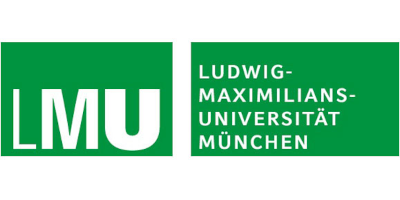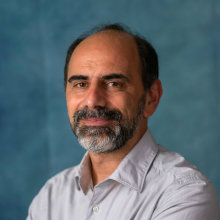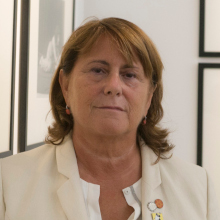Shylock Notebook
Project
The Shylock Notebook is an archive of multimedia resources for people interested in William Shakespeare’s “The Merchant of Venice” and its contexts.
It can be used by students, actors, scholars, teachers, directors, artists, readers and by whoever is attracted by this famous and controversial play. The Notebook is based on the Creative Europe project “ShaBeGh - Shakespeare in and beyond the Ghetto” that led to the first performance of “The Merchant of Venice” in the Ghetto of Venice in 2016, and to numerous workshops and activities linked to it.
It can be used to research the archived materials or to take inspiration for new projects. This archive was first created in 2016 by Alan Del Piccolo and updated in 2024 by Rachele S. Bassan. Most of the information (like the participants’ biographical profiles) reflects the 2016 version. We fondly remember some friends who are no longer with us, the actors Reginald Cathey and Ned Eisenberg and the cameraman Dan Kneece, who were key participants of “The Merchant ‘in’ Venice”.
ShaBeGh - Shakespeare In and Beyond the Ghetto
Two landmark anniversaries coincided in 2016: the 400th anniversary of William Shakespeare’s death and the 500th anniversary of the foundation of the Jewish Ghetto of Venice, a place that provided the world with the concept of the 'ghetto'. It is also the historical backdrop to Shakespeare’s controversial play, “The Merchant of Venice”. Both the Ghetto and the “Merchant” are fundamentally ambivalent documents of European civilisation, as instruments of intolerance and catalysts for cultural exchange. “Shakespeare In and Beyond the Ghetto” draws on these two momentous events to reflect and respond creatively to the legacy of European racism and tolerance, and to the remarkable variety of cross-cultural exchange engendered by the Ghetto's creation and the performance of Shakespeare’s play.
This project's starting point is the historic first performance of “The Merchant of Venice” in the Ghetto, an event that brings into a creative relationship two milestones of European intangible and tangible heritage. The artistic and civic components of the play are then given a broader European dimension through several activities that generate substantial transnational mobility. The goal of the programme – including the theatre production, a summer school, two symposia, and ten artistic workshops, programmed across three years and four countries – is to show how a multidisciplinary creative endeavour can refresh the public perception of a classic theatre masterpiece and a heritage site that have a long, tormented history in today's Europe. The final and crucial component is the dissemination of the project outcomes by way of different digital media: film, radio, and an online portal as a reference point for future studies and performances of “The Merchant of Venice”.
The Merchant
Shakespeare in the Ghetto
In 2016 the stars aligned. It was the year of an extraordinary intersection, the 500th anniversary of the formation of the Jewish Ghetto in Venice and the 400th anniversary of William Shakespeare’s death.
To commemorate these historic events, Ca’ Foscari University of Venice invited the international company Compagnia de’ Colombari to provide a major event of world theatre: an imaginative, ambitious production of “The Merchant of Venice” performed for the first time in the still-extant (and newly revitalised) Jewish Ghetto on 26-31 July 2016.
The production was directed by Karin Coonrod with an international cast performing in English and multiple languages.
This site specific, open-air performance brought “The Merchant” to life in a way almost impossible anywhere else; investigating its poignant and painful exploration of love and hate, avarice and mercy, and, above all, what it means to be human. The event is part of the official program of the Ghetto Quincentennial and the centrepiece of the Creative Europe project “Shakespeare in and beyond the Ghetto”.
The Venetian Ghetto
Shakespeare does not mention the Ghetto in “The Merchant of Venice”, but the Ghetto is presupposed in the play. We may argue that this specific site originates the Shakespearean text as an indispensable, non-literary source, since the social and cultural dynamics of the play are enabled by that new space legally constituted by the Republic of Venice.
In 1516 the Venice Senate decreed that the Jews, who had fled to the city after the rout of Venice at the battle of Agnadello, should be confined to the former ‘Public Copper Foundry’ (Geto), used in the past to manufacture ordnance, securing their economic services but keeping them safely at the margins. It is not clear whether it was the early German foundry workers or the incoming German Jews who, by gutturalizing the initial ‘G’, turned the Getto into the Ghetto (and it is a curious fact that a lot of alternative etymologies continue to be offered in the face of evidence). Other Jewish isolated areas had existed before Venice, but in 1555 Pope Paul IV decided to model new segregated Jewish quarters located in his territories after this Venetian area; from there the name Ghetto started spread in space and time to other ethnic enclaves and countless other physical, psychological, and metaphorical forms of limitation and confinement. Constrained within the narrow limits of an island, the Ghetto became at once a place of segregation and a safe haven for refugees, a mosaic of different Jewish traditions, with Italians, German Ashkenazim, Sephardim from the ports of the Levant, and the descendants of Iberian Marranos coming together in the same small quarter, which remained segregated until 1797.
Shakespeare as a global phenomenon
Shakespeare is the quintessential European author as well as a global phenomenon that transcends national borders, institutional boundaries and historical categories.
His two plays set in Venice, “The Merchant of Venice” and “Othello”, are particularly relevant for the cultural memory and the future of Europe.
Both have at their centre an outsider, the Jewish moneylender Shylock and the Moor Othello, arguably the two most prominent "others" of Western culture. The paradox is that they have been both vehicles of prejudice and gateways of toleration.
Shylock was often exploited for antisemitic purposes, carrying with him century-old stereotypes about Jewish greed and propensity to revenge. On the other hand, as a member of a persecuted minority, Shylock has also been used to promote sympathy for the Jews.
This project provides the unique opportunity to explore all the political implications of “The Merchant of Venice” and to experiment with ways in which a sensitive play can be adapted to different media and reach different audiences, including children and young adults.
The Ghetto of Venice
Venice is famous for its beauty and history, which have long been the source of legend and inspiration. Less known is the fact that, for centuries, Venice was also a focal point of Jewish life and culture. The Ghetto, founded in 1516 as a place of segregation, became an important crossroads of various Jewish communities and a place for dialogue between Jews and non-Jews. It was the model for all subsequent ghettos, beginning with the name itself which derives from the Venetian geto (foundry).
Today tens of thousands of people visit the Ghetto every year: they tour its synagogues and museum, gaze in wonder at the tall tenements and remnants of its famous 'banks', and they read the memorial plaques dedicated to the Holocaust. The small but vibrant Jewish population treasures its own traditions and participates in the civic and cultural life of Venice.
The 500th anniversary of the founding of the Ghetto has been a unique opportunity to open a new phase in the history of this site and to highlight its global relevance. At a time of political uncertainty in Europe, the Ghetto has precious ethical and cultural lessons to educate the public about the Jews, about human rights, about cross-cultural and interfaith dialogue. This apparently marginal place in the world's most visited city is yet crucial for understanding how societies can engage in cross-cultural conversation to their mutual benefit. Shylock, the moneylender from “The Merchant of Venice”, despite never having existed, still manages to be the most famous Venetian Jew of all time. By unpacking the most famous myth linked to the Ghetto, we hope to demystify the stereotypes that have accrued around this exemplary site.
Resources
- Videos: the video section contains short interviews with scholars, directors and actors on various aspects of the play; short clips of professional actors as well as students and scholars acting selected passages from the play; excerpts from discussions on various themes; clips from projects in schools and universities; teasers and previews of documentaries on the play and on the Ghetto.
- Images: the image section contains artworks from the workshops, antique music scores, posters, pictures taken during the theatrical performance, and more.
- Texts: the text section contains essays from scholars, lyrics and scores from traditional music, and more.
- Music: the music section contains studio recordings and live performances of pieces of music that were adapted from traditional repertoires of the 16th century.
Flyers and booklets
Documentaries
This section includes a selection of documentaries depicting the activities that took place within the "Shakespeare In and Beyond the Ghetto" project.
- “A Gathering of Strangers: the Making of The Merchant of Venice”
The story of the production of the Merchant in Venice and its making is told in "A Gathering of Strangers" (2019), the official documentary of the "Shakespeare in and beyond the Ghetto" project. - “A Gathering of Strangers”
Excerpt. "A Gathering of Strangers" documents rehearsals for the first performance of Shakespeare's "Merchant of Venice" in Venice in summer 2016, as performed by Compagnia de Colombari, directed by Karin Coonrod. We highlight the "Shylock Project," an artistic, scholarly inquiry organized by Shaul Bassi about Shakespeare's impact, Venice's Jewish ghetto and the upcoming performance. Recorded in July 2015. - “Shylock's Ghost”
Alan Yentob travels to the ghetto in Venice with award-winning novelist Howard Jacobson as he embarks on a retelling of Shakespeare's most performed play, The Merchant of Venice. The episode covers the first rehearsals of the Merchant production in 2015. - “Sorgente di vita: Il mercante in campo” [ITA]
- “Shylock torna nel Ghetto di Venezia, cast internazionale per ‘Il Mercante di Venezia’” [ITA]
News on the production - “Viaggio nella bellezza. L'Italia di Shakespeare” [ITA]
- “The Wolf in the Water”
By Naomi Alderman. BBC Radio Drama exploring what happened to Jessica, Shylock's daughter in Shakespeare's "The Merchant of Venice". With Pippa Bennett-Warner and Scott Arthur.
On the Ghetto
- “New eBook Unveils the World’s First Jewish Ghetto”
Free download - “The Venice Ghetto, 500 years of life”
The Venice Ghetto, 500 years of life reconstructs the history of the oldest ghetto of Europe, thanks to the memories and to the testimonies of “excellent” witnesses, custodians of the memory and of the complex evolution of the Jewish community in Venice. - “Venice and the Ghetto”
German and French premiere of the 90 minute-TV Documentary: Our film starts the ARTE 25 years anniversary program at Saturday, 27 May 2017 - “Il Ghetto Ebraico di Venezia compie 500 anni” [ITA]
- “Sorgente di Vitaa. Oltre il ghetto” [ITA]
- "The Venice Ghetto"
To mark the 500th anniversary of the Venice Ghetto, historian Jerry Brotton travels to the city to discover how the place became to be the first of its kind in the world. - “La casa dei viventi. Originale radiofonico di Laura Forti” [ITA]
- “Hadassa Goldvicht | The house of life”
Fondazione Querini Stampalia, Venice, Italy, May 9 - November 26, 2017. The Israel Museum presents Hadassa Goldvicht’s The House Of Life, a multi-channel video work that explores venice’s transformation and diminished population through the lens of the keeper of its ancient jewish cemeteries
News and reviews
- Karin Coonrod. “Shylock, Remade in the Venice Ghetto. What we learned about ‘Merchant of Venice’ by staging it in the city where it was set”
"I read and reread the email from David Scott Kastan, a Shakespeare professor and scholar at Yale, inviting me into "The Merchant of Venice "Project in the Venice Ghetto in 2016. David had imagined an ingenious and provocative way to wrap together the 500th anniversary of the Ghetto’s origin and the 400th of Shakespeare’s death: to perform "The Merchant of Venice “in the Ghetto itself...” - Walter Valeri. “Shylock Slips Out of His Skin. Preliminary dramaturgical notes”
“We know that it is practically impossible to have an innocent and unbiased reading of Shakespeare’s The Merchant of Venice today- actually that’s what makes this work so versatile for contemporary adaptations. More than identifying possible cuts or scenes to be added, the challenge lies in conveying the intentions of the lines uttered by every single character, thus, the words spoken by the actor, the ideas he/she expresses and what happens to the listening audiences...” - James Shapiro. “A Shylock For All Seasons”
“One of the more unusual events in the global celebration of the 400th anniversary of Shakespeare’s death will be a public trial of Shylock. It will take place on July 27 in the Venetian Ghetto (itself marking an anniversary, as Jews were first confined there 500 years ago). The mock trial will be presided over by the US Supreme Court Justice Ruth Bader Ginsburg, and I’ll play a part in it — as yet undetermined...” - Ruth Ellen Gruber. “Venice welcomes back Shylock in marking its Jewish history”
“VENICE, Italy (ITA) — Last week, an international, multilingual cast performed Shakespeare’s controversial play, “The Merchant of Venice,” in the secluded main plaza of the city’s historic Jewish Ghetto. It was the first time the play was performed in the iconic location...” - Shaul Bassi. “Il Mercante a Venezia” [ITA]
- George Medovoy. “‘Shylock’ on stage in Venice Jewish ghetto”
“If you venture into the historic Jewish ghetto of Venice this year, you could very well encounter the ghost of Shylock, whose complicated persona has been at the center of lasting debate in the annals of Shakespearian theater. The Merchant of Venice, with its central Shylock figure, a character both despised and pitied, is to appear July 26-29 and 31 in the very ghetto where Jews were first separated from the rest of Venice during the Passover of 1516...” - Judi Herman. “Review: ‘The Merchant in Venice’ - Shylock triumphs in the Ghetto and in the courtroom”
“There's nothing like an anniversary to resonate with a production of a play. The conjunction of the 500th anniversary of the establishing of the Venice Ghetto and the 400th anniversary of Shakespeare's death have provided an irresistible opportunity to stage The Merchant of Venice in the ghetto itself for the very first time...” - Marie-Christine Tabet. “Quand Venise réhabilite son marchand…” [FRA]
- Jill Radsken. "‘The Merchant’ in Venice. Stephen Greenblatt, Ruth Bader Ginsburg help commemorate 500th anniversary of Jewish ghetto"
“Recognizing the complexity inherent in marking the 500th anniversary of the Venice ghetto, organizers created some history of their own by staging the first production of Shakespeare’s “The Merchant of Venice” on the city’s landmark palazzo and holding a mock trial involving U.S. Supreme Court Associate Justice Ruth Bader Ginsburg...” - Huffington Post, “'Il Mercante di Venezia' di Shakespeare messo in scena per la prima volta nell'ambientazione originaria: il ghetto veneziano” [ITA]
- Alessandro Zaccuri. “Spettacolo in laguna. Con Shakespeare nel ghetto di Venezia” [ITA]
- Caterina Barone. “Cinque Shylock per il Mercante in Ghetto” [ITA]
- Shiryn Ghermezian. “‘Merchant of Venice’ to Be Staged for First Time in Italian Jewish Ghetto as Area Marks 500th Anniversary”
“William Shakespeare’s play “The Merchant of Venice” will be staged for the first time ever in the city’s Jewish ghetto on its 500th anniversary, which coincides with the 400th anniversary of the famous playwright’s death...” - Bess Connolly Martell. “In conversation: Karin Coonrod and David Scott Kastan on ‘The Merchant of Venice’ returning to its roots”
“This year marks the intersection of two milestones — the 500th year of the formation of the Venetian Ghetto, the area of Venice where Jews were forced to live under the Venetian Republic, and the 400th anniversary of the death of William Shakespeare, whose “The Merchant of Venice” is set in that ghetto. In commemoration, Compagnia de’ Colombari, an international collective of performing artists led by Karin Coonrod, lecturer in directing at Yale School of Drama (YSD), performed “The Merchant of Venice” in the Venetian Ghetto this summer...” - Heather Neill. “theartsdesk in Venice: Shylock comes home”
""In such a night as this..." begins Lorenzo's beautiful speech in Act V of The Merchant of Venice. Watching Shakespeare's play in the Campo del Ghetto Nuovo on a balmy evening under a darkening navy blue sky, with cicadas providing a busy background recitative, it might have been tempting to be lulled by the romance of the surroundings..." - Diana Henderson. “2016 Marks the 500th Anniversary of the Jewish Ghetto in Venice”
"The Venetian Ghetto in Venice, Italy was instituted on 29 March 1516.MIT’s Global Shakespeares and “The Merchant in Venice” project commemorate the 400th anniversary of Shakespeare’s death with the first ever on-site performance of The Merchant of Venice in Venice’s 500 year-old Jewish Ghetto...".
The Trial
- A.J. Goldmann. “In the Case of Shylock V. Antonio, Judge Ginsburg Presides”
“Vengeful. Bloodthirsty. Merciless. Jewish. William Shakespeare’s “The Merchant of Venice” is practically synonymous with Shylock, the moneylending Jew who demands a pound of flesh from his Christian nemesis Antonio (the actual merchant of the title). But Shakespeare’s romantic-comedy-meets-courtroom-drama it is also full of thorny legal issues. Was there ever a demand for payment prior to trial? How did a civil case between Shylock and Antonio get turned into a criminal case with Shylock begging for his life? Could Shylock have ever guessed that the Alien Statute, used against foreign enemies of Venice’s citizens, would be invoked and used against him? ...” - Rachel Donadio. “Justice Ruth Bader Ginsburg Presides Over Shylock’s Appeal”
“VENICE — What do Supreme Court justices do on their summer vacations? For Justice Ruth Bader Ginsburg — longtime liberal standard-bearer, recent Donald J. Trump critic — this year’s answer is: Go to Venice, watch your grandson perform in a production of “The Merchant of Venice” and preside over a mock appeal of the city’s most notorious resident, Shylock...” - Jewish Telegraphic Agency. “Ruth Bader Ginsburg attends premiere of ‘Merchant of Venice’ in city’s ghetto”
“VENICE, Italy (JTA) – Shakespeare’s play “The Merchant of Venice” for the first time is being performed on the spot where some of the action takes place – the main square of the historic Venice Ghetto. The production, which opened Tuesday night and runs for a week, is staged as part of yearlong events marking the 500th anniversary of the imposition of the ghetto by Venetian rulers in 1516 as well as the 400th anniversary of Shakespeare’s death...” - The Israel National News. “Bader Ginsburg attends ‘Merchant of Venice’”
"Shakespeare’s play "The Merchant of Venice" for the first time is being performed on the spot where some of the action takes place – the main square of the historic Venice Ghetto. The production, which opened Tuesday night and runs for a week, is staged as part of yearlong events marking the 500th anniversary of the imposition of the ghetto by Venetian rulers in 1516 as well as the 400th anniversary of Shakespeare’s death..." - Dario Calimani. “Shylock in Ghetto” [ITA]
- Shaul Bassi. “Venezia, Shylock, il Ghetto, i motivi di un successo” [ITA]
Suggested readings
- Shaul Bassi and Carol Chillington Rutter (eds), "The Merchant in Venice: Shakespeare in the Ghetto", Venezia: Edizioni Ca’ Foscari, 2021.
- Janet Adelman, "Blood Relations: Christian and Jew in The Merchant of Venice". Chicago: University of Chicago Press, 2008.
- Shaul Bassi and Alberto Toso Fei, "Shakespeare in Venice. Exploring the City with Shylock and Othello". Treviso: Elzeviro, 2007.
- Harry Berger, "A Fury in the Words. Love and Embarrassment in Shakespeare's Venice". 2012.
- John Gross, "Shylock: Four Hundred Years in the Life of a Legend". London: Chatto and Windus, 1992.
- Kenneth Gross, "Shylock is Shakespeare". Chicago: University of Chicago Press, 2006.
- Edna Nahshon and Michael Shapiro (eds), "Wrestling with Shylock: Jewish Responses to The Merchant of Venice". Cambridge: Cambridge University Press, 2017.
- Michael Neill, "Shakespeare’s The Merchant of Venice". Lacock, Wiltshire: Connell Publishing, 2018.
- David Nirenberg, "Anti-Judaism: The Western Tradition". New York: Norton, 2013.
- James Shapiro, "Shakespeare and the Jews". New York: Columbia University Press, 1996/2016.
- Boika Sokolova, "William Shakespeare: The Merchant of Venice". Humanities Ebooks (HEB), 2009.
- Laura Tosi and Shaul Bassi (eds), "Visions of Venice in Shakespeare". Farnham: Ashgate, 2011.
Team
Partners
Ca' Foscari University of Venice (Project Leader) is a public university based in Venice, Italy.
Its Department of Linguistics and Comparative Cultural Studies (DSLCC) promotes research and offers interdisciplinary courses in more than 20 different languages.
Among the areas of research relevant to creative projects are the comparative study of foreign literature and dynamics of literary genres, their interactions with other forms of expression (cinema, theatre, visual arts) and the relations between literature, culture, society, and politics.
Every year Ca' Foscari organises several events and cultural activities: literary and film festivals, conferences, exhibitions, music performances, and a theatre season.
Fondazione Giorgio Cini is a non-profit cultural institution based in Venice, Italy, and its Institute of Theatre and Opera manages collections and sections dedicated to European theatre and opera.
The Institute also organises and promotes exhibitions, conferences and workshops in the field of its own research activities.
Giorgio Cini, based on the Island of San Giorgio, has been the stage of many artistic events at the crossroads of different disciplines.
Two major UK institutions, University of Warwick and Queen Mary University of London, build on the work carried out through their joint programme Global Shakespeare.
This unique partnership shaped the research agenda in Shakespeare studies through an innovative jointly-delivered MA programme, creative research projects with partners such as Dash Arts and People’s Palace Projects, and a series of public seminars which have brought together expert writers, actors, directors, and scholars.
The German partner Ludwig-Maximilians-Universität München, one of Europe's premier academic and research institutions, has a long and internationally renowned tradition in Shakespeare Studies, making it the leading place for this field in the country. Against this background of academic excellence, Munich Shakespeare studies is also remarkable for its involvement in a wider social field, in particular, artistic institutions and creative contexts. Through a strategic partnership with the Shakespeare Institute at Stratford-upon-Avon, UK, and its current focus on “Shakespeare and Creativity” in connection with the Royal Shakespeare Company, working relationships have also been established with German theatre companies such as the Bremen Shakespeare Company and local institutions.
Tony Bulandra Municipal Theatre is recognised as the "youngest theatre in Romania". Established in 2002, it has the youngest troupe of actors in the country. Bulandra has two teams – one dedicated to puppet and children’s theatre, and one for the great stage and the studio. They have an outdoor amphitheater close to the city’s historic centre and to the park, which has been used to stage children’s plays during summer and project films and recorded shows during the BABEL International Performing Arts Festival. As an initiative of the Tony Bulandra Theatre, The BABEL International Performing Arts Festival managed in just three years of existence (between 2007 and 2009) to become one of the most robust performing arts festivals in Eastern Europe.
Steering Committee and contributors
Shaul Bassi
Ca' Foscari University of Venice, Italy
Project leader
Maria Ida Biggi
Ca' Foscari University of Venice and Fondazione Giorgio Cini, Italy
Liviu Cheilou [RON]
Tony Bulandra Municipal Theatre, Targoviste, Romania
Tobias Döring [DEU]
Ludwig-Maximilians-Universität München, Germany
David Schalkwyk
Queen Mary University of London, UK











![Liviu Cheilou [RON] Liviu Cheilou [RON]](/fileadmin/user_upload/img/persone-no-unive/Cheloiu-Liviu.jpg)
![Tobias Döring [DEU] Tobias Döring [DEU]](/fileadmin/user_upload/img/persone-no-unive/Doring-Tobias.jpg)



